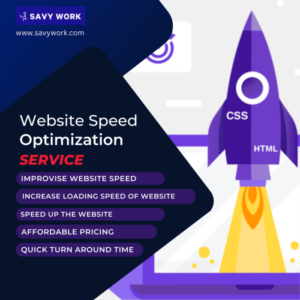
Low-code/no-code web development platforms are revolutionizing the way businesses approach creating and managing websites. These innovative tools empower users of all skill levels to build functional, visually appealing web applications without requiring extensive programming knowledge. By bridging the gap between technical and non-technical users, these platforms enable organizations to streamline their development processes and focus on creativity and strategy.
In today’s fast-paced digital landscape, the significance of low-code/no-code solutions cannot be overstated. They not only simplify web development but also offer a plethora of features that enhance marketing strategies, improve internet security, and boost efforts. With a variety of options available, understanding how to leverage these platforms effectively can set businesses apart in a competitive market.
Overview of Low-code/No-code Web Development Platforms

Low-code and no-code web development platforms have emerged as powerful tools in the tech landscape, enabling individuals and organizations to create applications with minimal coding expertise. These platforms facilitate rapid development and deployment, making technology accessible to a broader audience, including those without a traditional programming background.Low-code platforms provide a balanced approach by combining visual development environments with the option to write code when necessary, while no-code platforms allow users to build applications entirely through visual interfaces.
The significance of these platforms lies in their ability to streamline the development process, reduce time to market, and empower users from various backgrounds to contribute to application development.
Advantages and Disadvantages of Low-code/No-code Solutions
Both low-code and no-code platforms come with a mix of advantages and disadvantages that businesses should consider. Understanding these aspects can help organizations make informed decisions regarding their development strategies.Advantages of using low-code/no-code solutions include:
- Speed of Development: Applications can be developed and deployed much faster compared to traditional coding methods, allowing businesses to react swiftly to market demands.
- Cost Efficiency: Reducing the need for specialized programming skills can lower development costs and enable better allocation of resources.
- Enhanced Collaboration: Business users can collaborate with IT teams more effectively, bridging the gap between technical and non-technical staff.
- Flexibility: Rapid prototyping and iteration foster innovation, allowing businesses to adapt their solutions as they gather feedback.
On the downside, low-code/no-code platforms may also present challenges:
- Limited Customization: While these platforms offer a range of templates and components, they might not cover all specific business needs, leading to potential compromises.
- Dependency on Vendor: Organizations may become reliant on the platform provider for support, updates, and security, which could be a risk if the provider fails to deliver.
- Scalability Concerns: As applications grow in complexity, some platforms may struggle to handle increased demand or integration needs.
- Security Risks: Applications developed on these platforms could be more vulnerable to security threats if not properly managed, especially if integration with third-party services is involved.
Popular Low-code/No-code Platforms
A variety of platforms are currently available, each catering to different business needs and user expertise levels. Some of the most popular low-code/no-code platforms include:
- Bubble: A no-code platform designed for building fully functional web applications without writing code. Users can create complex database-driven applications visually.
- OutSystems: A powerful low-code platform that focuses on enterprise solutions, enabling fast development of large-scale applications while maintaining security and scalability.
- Airtable: Combining spreadsheet functionalities with database capabilities, Airtable lets users create applications with ease, making it a favorite for teams managing projects and workflows.
- AppGyver: A no-code platform that enables users to build apps for web and mobile without any coding knowledge, focusing on a user-friendly interface and extensive component library.
- Mendix: A low-code development platform aimed at enterprises, allowing for rapid application development with a strong focus on collaboration between IT and business teams.
Integration with Marketing Strategies

Low-code and no-code web development platforms have revolutionized the way businesses approach their marketing strategies. By streamlining the web development process, these platforms enable marketers to create, modify, and maintain websites quickly and efficiently, leading to enhanced search engine visibility and improved security for their online applications.
Enhancement of Search Engine Marketing Efforts
Low-code and no-code platforms facilitate the rapid creation of landing pages and other marketing assets, crucial for search engine marketing (SEM). They allow marketers to deploy A/B testing easily, enabling them to determine which layouts, content, or calls-to-action perform better in attracting clicks and conversions. This flexibility can lead to more effective campaigns.
-Friendly Features
Many low-code platforms come with built-in tools that simplify the optimization of meta tags, URLs, and image alt texts. This encourages better indexing by search engines.
Analytics Integration
These platforms often enable seamless integration with analytics tools, allowing marketers to track performance metrics and refine their strategies based on real-time data.
“In the digital landscape, speed and adaptability in marketing can significantly influence conversion rates and search engine rankings.”
Improvement of Internet Security for Web Applications
Security is paramount in maintaining user trust and safeguarding data. Low-code and no-code platforms enhance internet security by implementing best practices and security features without requiring extensive coding knowledge.
Automatic Security Updates
Many platforms automatically deploy security patches and updates, reducing vulnerabilities associated with outdated software.
User Access Controls
Built-in user authentication and access management features help ensure that sensitive information is protected from unauthorized access.
Compliance Features
These tools often integrate compliance features that help businesses adhere to regulations such as GDPR and CCPA, further enhancing data protection measures.
“Prioritizing security in web applications not only protects your users but also fortifies your brand’s reputation in the digital marketplace.”
Impact on Internet and Site Promotion Strategies
The impact of low-code and no-code development on and site promotion is profound and multifaceted. These platforms simplify the technical aspects of , making it accessible for non-technical users, which can lead to improved site visibility and organic traffic.
Customizable Templates
Many low-code tools offer -optimized templates that cater to various industries, allowing businesses to maintain a professional appearance while ensuring that their strategies align with best practices.
Speed and Performance
Fast-loading websites are favored by search engines. Low-code platforms often optimize for performance out of the box, enhancing user experience and positively influencing rankings.
Content Management
With user-friendly content management features, marketers can easily update and optimize their site content for targeting, which is crucial for attracting organic traffic.
“Effective site promotion and are not just about content; they also hinge on technical performance and user experience.”
Social Media and Web Development
The integration of social media with web development has revolutionized how websites engage with users and promote content. Low-code/no-code platforms provide tools to seamlessly incorporate social media functionalities, enabling websites to enhance user interaction and drive traffic efficiently. This segment discusses methods for integrating social bookmarking and networking, leveraging video marketing, and practicing effective web design within these environments.
Integration of Social Bookmarking and Social Networking Functionalities
Incorporating social bookmarking and social networking features into websites built on low-code/no-code platforms enhances user interaction and content sharing. This integration can be achieved through built-in widgets and plugins that simplify the process. To effectively integrate these functionalities, consider the following methods:
- Widgets and Plugins: Most low-code/no-code platforms offer pre-built widgets for social sharing buttons. You can easily add options for popular platforms like Facebook, Twitter, LinkedIn, and Instagram.
- Customizable APIs: Utilize APIs from social media platforms to create tailored experiences. This allows users to log in using their social media credentials and share content directly from your site.
- Social Feeds: Embed live social media feeds on your website to showcase user-generated content. This keeps your site dynamic and encourages user engagement.
Integrating these methods not only enhances the user experience but also improves your site’s by increasing social signals.
Video Marketing and Streaming on Websites
Video marketing is a powerful tool for engagement, and low-code/no-code platforms make it accessible for businesses of all sizes. These platforms provide the functionality to embed video content easily, enhancing user experience and driving conversions.Employ the following techniques for effective video integration:
- Video Embedding: Use the drag-and-drop features of low-code platforms to embed videos from platforms like YouTube or Vimeo directly onto your site.
- Live Streaming: Implement live streaming features that allow real-time interaction with users. Tools like OBS can be integrated with low-code platforms to facilitate this.
- Interactive Video Content: Create interactive videos that allow viewers to engage with the content. Options like clickable links or embedded quizzes keep the audience engaged and returning for more.
Utilizing video effectively can help convey messages more dynamically, capturing user attention more than static content.
Effective Web Design and Development Practices
Designing a user-friendly website is crucial for retaining visitors and achieving business objectives. Within a low-code/no-code environment, following best practices can lead to a more effective end product.Key practices for web design and development include:
- Responsive Design: Ensure your website adjusts seamlessly across devices. Most low-code platforms have features that enable responsive design without extensive coding.
- User Experience (UX): Focus on creating an intuitive navigation experience. Simplify menus and ensure essential information is easy to access.
- Consistent Branding: Maintain brand consistency in colors, fonts, and imagery. This coherence helps establish trust and recognition among users.
- Accessibility: Design with accessibility in mind, ensuring your website is usable for individuals with disabilities. This can include alt text for images and screen reader compatibility.
By implementing these practices, developers can create websites that are not only visually appealing but also functional and accessible, enhancing overall user engagement.
Epilogue
In conclusion, low-code/no-code web development platforms represent a significant shift in how websites are built and maintained. They provide users with the flexibility to innovate without the constraints of traditional coding, ultimately fostering a more inclusive development environment. As these platforms continue to evolve, embracing their capabilities can lead to more efficient processes and exciting new opportunities for businesses looking to thrive in the digital world.
FAQs
What are the main advantages of low-code/no-code platforms?
The primary advantages include faster development times, reduced costs, and accessibility for non-technical users, allowing for greater innovation.
Can low-code/no-code platforms handle large-scale projects?
Yes, many low-code/no-code platforms are designed to scale and can support large projects with the right configuration and resources.
Are there any security concerns with using low-code/no-code platforms?
While these platforms often come with built-in security features, users should still adhere to best practices to ensure their applications are secure.
How do low-code/no-code platforms impact ?
These platforms can enhance by providing tools that allow for better optimization of web pages without deep technical knowledge.
Are low-code/no-code platforms suitable for professional developers?
Absolutely! Professional developers can use these platforms to expedite their workflow and focus on more complex tasks while leveraging rapid development capabilities.





